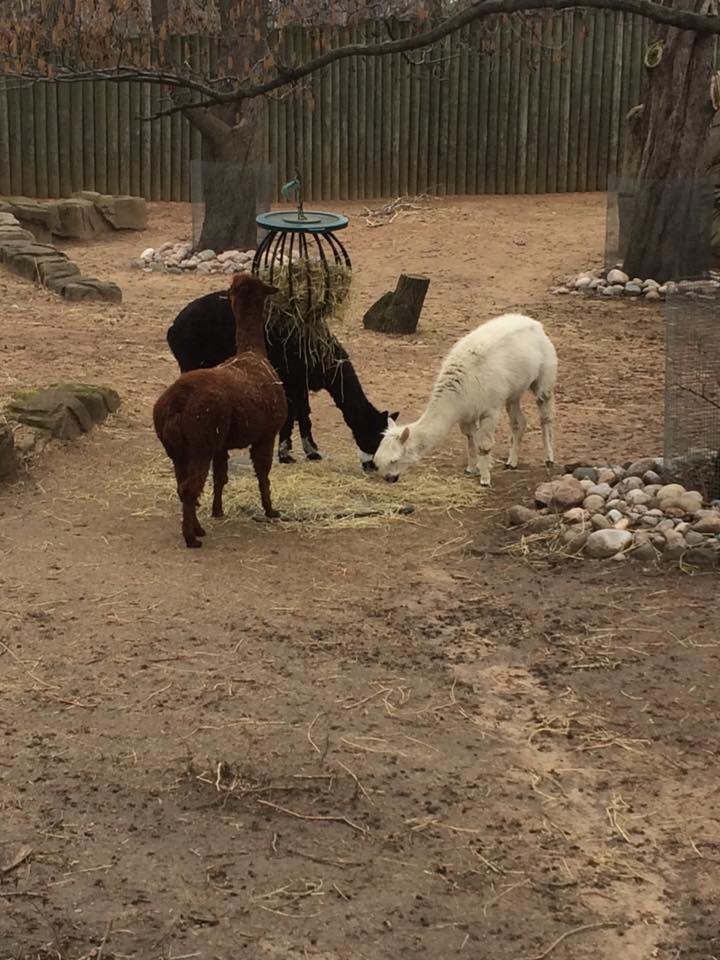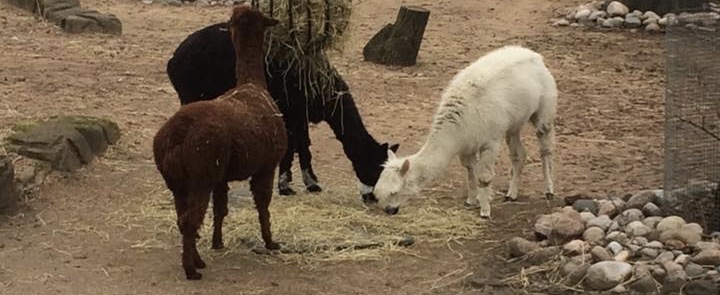ANIMAL: Alpaca Vicugna pacos Type of Animal: Camel Habitat: Mountainous areas, grassland, desert, semi-desert, plains, plateau Location(s): Native to C. & S. Andes from Peru to Argentina. Found on farms worldwide. Appearance: Looks similar to llama but much smaller, found in many different colors such as black, white, red, beige, blonde, brown, & mixtures of these colors, male larger than female and has more pronounced fighting teeth, big pointy ears w/ small head & slender neck. 2 breeds: more abundant Huacayo has longer hair around body/legs/neck, shorter hair around head/feet; Suri has silkier hair w/o crimp. Food/Diet: Grasses, hay, leaves, grains, vegetables, fruit Status in Wild: Domesticated Conservation: Breeding on farms. Bred for meat & wool. Lifestyle: On breeding farms, each stud male kept w/ 3-30 females & young. Future studs, geldings, & other intact males live in bachelor herds of 2-50 animals. Additional Info: Called: Male-Bull/Macho Female-Cow/Hembra Young-Cria Group-Herd Weight: Male-140-200 lbs Female-110-170 lbs Young-32-42 lbs Gestation: 8-11 months Life Span: 20 years Height: 2.65-3.25 ft for both sexes Body Length: 3.94-7.38 ft for both sexes Tail Length: 5.9-9.84 in for both sexes Main predators are bears, pumas, wolves, coyotes, & dogs. Smaller dogs, foxes, & small cats prey on young. Males known to fight to death by using fighting teeth to rip/bite each other over harems of females. They’ll spit at each other to establish hierarchy. Unlike llamas, they’re not used as pack animals. Herds tend to have communal dung piles on their pastures making cleaning up after them easy. Young males kicked out of herd by father when they’re as young as 10 months old. Sexually mature at a year old. Long thought to be descended from guanaco like llamas, but are actually descended from vicuna. Domesticated 6,000 years ago by Incas. Fun Fact(s): Used as guard animals for sheep, goats, & other livestock. Sometimes kept as pets. They’ll spit if agitated but most are very gentle. However, some hand-reared males become extremely aggressive as adults due to not learning proper alpaca behavior, thus feeling dominant over people. This is called Berserk Llama Syndrome (BLS), which also occurs in hand-reared male llamas.


I never knew the difference between a llama and alpaca! Thank you for your work.
Of course! You’re very welcome!